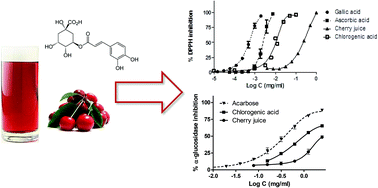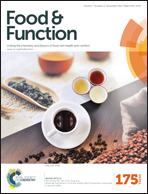Bioactive and functional properties of sour cherry juice (Prunus cerasus)
Abstract
Sour cherry juice (Prunus cerasus) is consumed as a nutritional supplement claiming health effects. The aim of the study was to evaluate the different properties of sour cherry juice in terms of antioxidant activity and inhibition of target enzymes in the central nervous system and diabetes. The content of polyphenols and anthocyanins was quantified. Different experiments were carried out to determine the radical scavenging properties of the juice. The activity of sour cherry juice was also tested in physiological relevant enzymes of the central nervous system (acetylcholinesterase, monoamine oxidase A, tyrosinase) and others involved in type 2 diabetes (α-glucosidase, dipeptidyl peptidase-4). Sour cherry juice showed significant antioxidant effects but the activity of the lyophilized juice was not superior to compounds such as ascorbic, gallic or chlorogenic acid. Furthermore, sour cherry juice and one of its main polyphenols known as chlorogenic acid were also able to inhibit monoamine oxidase A and tyrosinase as well as enzymes involved in diabetes. This is the first time that sour cherry juice is reported to inhibit monoamine oxidase A, α-glucosidase and dipeptidyl peptidase-4 in a dose dependent manner, which may be of interest for human health and the prevention of certain diseases.



 Please wait while we load your content...
Please wait while we load your content...